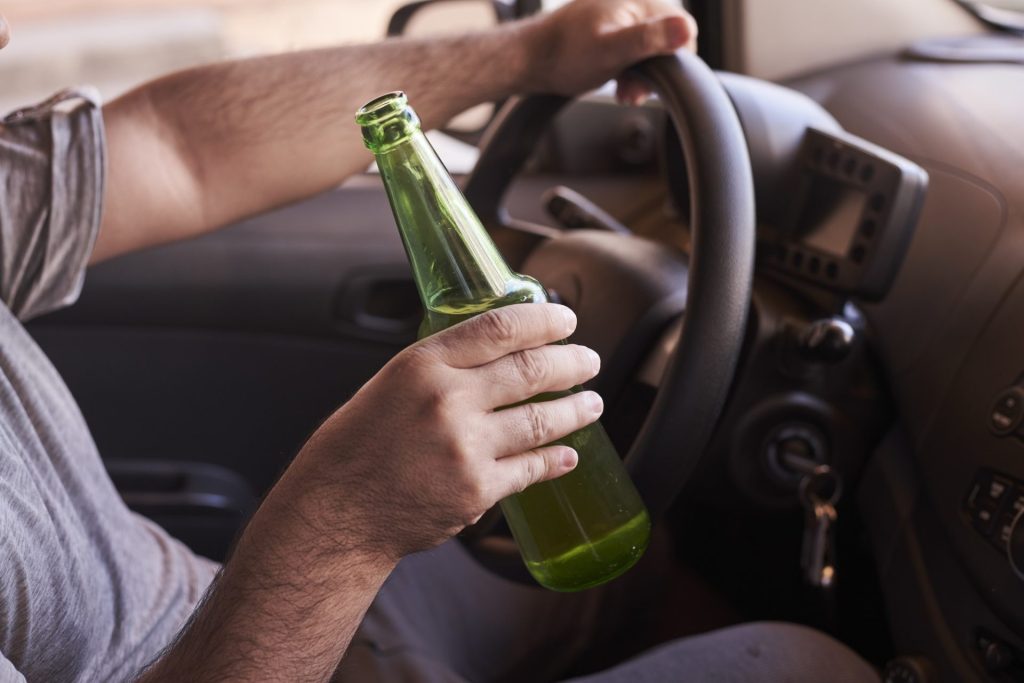Key Takeaways
- Act immediately—evidence disappears fast. Surveillance footage gets overwritten, skid marks fade, and witness memories become unreliable. Every hour that passes makes your case harder to prove.
- Get medical attention right away, even if you feel fine. Internal injuries and concussions don’t always show symptoms immediately. That medical documentation becomes crucial when the other driver can’t be found.
- Your Uninsured Motorist coverage is your lifeline. When the hit-and-run driver vanishes, your own UM/UIM coverage often becomes your primary source of compensation. While this coverage is optional in Colorado, this is exactly why we strongly recommend it to every client.
- Don’t let your insurance company lowball you. One of the worst things we see is insurance companies labeling legitimate hit-and-run claims as fraudulent or rushing victims into quick settlements before the full extent of injuries is known.
- Document everything at the scene if you’re able. Photos, witness information, partial license plates—every detail matters when you’re trying to identify a fleeing driver or prove your case without their presence.
- The emotional trauma is real and compensable. Hit-and-runs don’t just cause physical injuries—they shatter your sense of safety. Anxiety, depression, and PTSD deserve compensation alongside your physical injuries.
- Time limits are strict and unforgiving. You have limited time to file your claim, and missing these deadlines can permanently bar you from recovery. Don’t wait—the clock starts ticking immediately.
Hit-and-run accidents represent some of the most frustrating, gut-wrenching, and downright unfair legal scenarios we encounter in personal injury law. One moment you’re driving home, running errands, or picking up your kids—and the next, you’re blindsided by a careless driver who vanishes without a trace. No name. No apology. No accountability.
When a driver flees the scene after causing a collision, it doesn’t just leave behind shattered glass and dented metal. It leaves behind trauma, unanswered questions, and an uphill legal nightmare. Victims are often left injured, confused, and completely unsure where to turn next. Insurance companies might play hardball. Witnesses disappear. Evidence fades with time.
This isn’t just a crash—it’s a hit to your sense of safety, stability, and justice. And that’s why acting quickly matters. The challenges in hit-and-run cases are multilayered, emotionally draining, and legally intense. You need someone in your corner who’s seen this exact situation before and knows how to build your case from the ground up.
At times like this, working with a seasoned Denver personal injury law firm isn’t just helpful—it’s essential. These legal pros understand how to track down leads, navigate insurance loopholes, and fight for the compensation you actually deserve. Whether you’re dealing with hospital bills, lost wages, emotional trauma, or all of the above—they’ve got the tools, the team, and the tenacity to help you reclaim control.
Understanding the Nature of Hit-and-Run Accidents
A hit-and-run accident occurs when a driver involved in a collision leaves the scene without providing contact information, insurance details, or assistance to injured parties. This definition applies whether the incident involves other vehicles, pedestrians, bicyclists, or property damage. In Colorado, hit-and-run accidents are considered serious crimes with severe penalties, particularly when they involve “vulnerable users” like pedestrians or cyclists.
The statistics paint a sobering picture. Hit-and-run fatalities increased by 60% between 2009 and 2016, with 2,049 deaths recorded in 2016—the highest number on record. The AAA Foundation for Traffic Safety found that nearly 65% of hit-and-run fatalities involve pedestrians or bicyclists. Denver alone averaged approximately 17-18 hit-and-runs per day in 2017, yet the vast majority of hit-and-run accidents receive no punishment due to the difficulty in identifying perpetrators. These numbers underscore the gravity of the situation and the unique challenges hit-and-run victims face.
The Primary Challenges in Hit-and-Run Accident Cases
Identifying the At-Fault Driver: The Greatest Obstacle
The most significant challenge in any hit-and-run case is identifying the responsible party. When the at-fault driver flees the scene, victims are left without critical information needed to pursue compensation. This creates a domino effect of complications that can severely impact a victim’s ability to recover damages.
Drivers flee for numerous reasons, and understanding these motivations helps explain why hit-and-run cases are so prevalent:
- Lack of insurance coverage: Many fleeing drivers are uninsured or underinsured
- Impairment: Drivers under the influence of alcohol or drugs often flee to avoid DUI charges
- License issues: Those driving without valid licenses, or with suspended or revoked licenses
- Vehicle problems: Drivers of borrowed, stolen, or unregistered vehicles
- Criminal activity: Those with outstanding warrants, illegal substances, or stolen property
- Financial fear: Drivers who cannot afford the financial consequences of the accident
Without a known responsible party, law enforcement officers may struggle to identify the driver, even with thorough investigation. This leaves victims feeling helpless and unsure how to proceed with their claims.
Establishing Liability and Proving Negligence Without the Driver
Proving liability becomes exponentially more complex when the at-fault driver is unidentified. In typical car accident cases, establishing fault may be straightforward—rear-end collisions, for instance, usually place liability on the following driver. However, hit-and-run cases require proving negligence without the benefit of the driver’s presence, statements, or insurance information.
This process relies heavily on indirect evidence:
- Eyewitness accounts: Witness statements provide crucial details about the fleeing vehicle and the driver’s actions
- Surveillance footage: Cameras from nearby businesses, traffic intersections, or residential areas may capture the incident
- Physical evidence: Vehicle debris, paint scratches, skid marks, and other scene evidence help reconstruct the collision
- Police reports: Official documentation compiled by law enforcement officers forms the foundation of the case
The burden of proof remains on the victim to demonstrate that the fleeing driver’s actions—whether speeding, distracted driving, or disregarding traffic signals—directly caused the collision and resulting injuries. This requires meticulous evidence gathering and often involves accident reconstruction experts to build a compelling case.
Securing Compensation: Navigating Financial Recovery
Perhaps the most immediate concern for hit-and-run victims is how to secure compensation for their injuries and damages. The absence of the at-fault driver’s insurance information creates significant uncertainty about financial recovery.
Uninsured/Underinsured Motorist Coverage: The Primary Safety Net
When the responsible driver cannot be identified or lacks adequate insurance, victims must rely on their own Uninsured Motorist/Underinsured Motorist (UM/UIM) coverage. While this coverage is optional in Colorado, we strongly recommend it for precisely these situations.
Important Correction: In Colorado, UM/UIM coverage provides compensation for bodily injury only, not property damage. Property damage must be covered through collision insurance or the at-fault driver’s liability coverage if they are identified.
UM/UIM coverage can provide compensation for:
- Medical expenses and ongoing medical treatment costs
- Lost wages and diminished earning capacity
- Pain and suffering
- Other non-economic damages related to bodily injury
Insurance Company Challenges
Even with UM/UIM coverage, victims face potential disputes with their own insurance company. Insurance providers may attempt to minimize payouts, deny claims, or argue over damage valuations. Some insurance companies even label legitimate hit-and-run claims as fraudulent, adding another layer of complexity to an already difficult situation.
Collection Difficulties
If the at-fault driver is eventually identified and found liable, collecting compensation can still prove challenging. Many hit-and-run drivers are judgment-proof, meaning they lack sufficient assets or insurance to satisfy a court judgment. This reality makes UM/UIM coverage even more critical for victims.
Time Sensitivity and Legal Deadlines
Hit-and-run cases are inherently time-sensitive, creating pressure from multiple angles:
Evidence Degradation
Critical evidence deteriorates quickly after an accident. Surveillance footage may be overwritten, skid marks fade, and witness memories become less reliable. The longer the investigation takes, the more difficult it becomes to build a strong case.
Statute of Limitations
Colorado law imposes strict deadlines for filing claims:
- Motor vehicle accidents (including hit-and-runs): Three years from the date of the accident
- General personal injury claims: Two years from the date of injury
- Wrongful death cases: Two years from the date of death
Missing these deadlines can permanently bar victims from recovering compensation, making immediate legal action essential.
The Emotional and Psychological Toll
Beyond the physical injuries and financial concerns, hit-and-run accidents inflict significant emotional trauma on victims. The lack of accountability from the fleeing driver can leave victims feeling frustrated, isolated, and vulnerable. This emotional distress compounds the stress of dealing with serious injuries and mounting medical bills.
Many hit-and-run crash victims develop anxiety, depression, or post-traumatic stress disorder (PTSD). These mental health impacts deserve compensation alongside physical injuries, but they require comprehensive medical documentation and expert testimony to establish their full scope and impact.
Colorado Hit-and-Run Criminal Penalties
In Colorado, hit-and-run drivers face serious criminal consequences:
- Property damage only: Misdemeanor charges with fines up to $1,000
- Serious injury or death: Class 3 felony with penalties of 4-12 years in prison and fines ranging from $3,000 to $750,000
- License consequences: Automatic 12-point addition to driving record and potential license revocation
- Civil liability: Separate from criminal charges, drivers remain liable for all damages caused
Overcoming the Unique Challenges: Immediate Action and Legal Assistance
Critical Steps After a Hit-and-Run Accident
Taking prompt action after a hit-and-run accident can significantly protect your health and legal claim:
Seek Medical Attention Immediately
Even if injuries seem minor, get a medical evaluation right away. Some injuries, particularly internal injuries or concussions experienced by accident victims, may not manifest symptoms immediately. Prompt medical attention ensures proper treatment and creates vital documentation for your claim.
Report to Law Enforcement
Contact police officers immediately and file a comprehensive report. When the police arrive, provide all available details about the fleeing vehicle, including make, model, color, and any partial license plate information you remember.
Gather Evidence at the Scene
Document everything possible:
- Take photos of the accident scene, vehicle involved, vehicle damage, and any visible or severe injuries sustained
- Collect contact information from witnesses
- Note road conditions, weather, and time of day
- Look for surveillance cameras in the area
Notify Your Insurance Company
Inform your insurance provider promptly about the accident. Provide all relevant documentation, but be cautious about quick settlement offers. Don’t sign any agreements before consulting with an experienced attorney.
The Indispensable Role of an Experienced Hit-and-Run Accident Attorney
Navigating the unique challenges of hit-and-run incidents requires specialized legal expertise from a personal injury attorney. A skilled hit-and-run accident lawyer brings invaluable resources when it comes to personal injury protection.
Thorough Investigation
We conduct comprehensive investigations using resources often unavailable to individuals. This includes working with private investigators, accident reconstruction experts, and law enforcement to identify the fleeing driver and gather compelling evidence.
Establishing Liability
Our legal team determines all potentially liable parties and collects necessary proof of negligence. We understand how to build strong cases even when the at-fault driver remains unidentified.
Dealing with Insurance Companies
We handle all communication with insurance companies, protecting your rights and fighting for full compensation. Our experience with UM/UIM insurance claims ensures your coverage is properly utilized and insurance companies don’t take advantage of your situation. Our meticulous legal process ensures fair settlement is guaranteed.
Calculating Damages Accurately
Working with medical professionals and economic experts, our car accident attorney assesses the full extent of your damages, including:
- Current and future medical expenses
- Lost wages and diminished earning capacity
- Property damage (through collision coverage)
- Pain and suffering
- Loss of enjoyment of life
- In egregious cases, punitive damages
Managing Legal Proceedings
We handle all legal filings, ensure deadlines are met, and represent you in court if necessary. Our thorough preparation and aggressive advocacy maximize your chances of securing fair compensation.
Why Professional Legal Representation Makes All the Difference
Hit-and-run cases present unique challenges that require immediate, skilled legal intervention. The complexity of identifying responsible parties, establishing liability without direct evidence, navigating insurance disputes, and meeting strict deadlines makes professional representation essential.
At our personal injury law firm, we understand these challenges intimately. Our experienced team has successfully handled numerous hit-and-run cases, recovering substantial compensation for victims even in seemingly impossible situations. We know how to leverage investigative resources, work with law enforcement, and build compelling cases that hold responsible parties accountable.
You bear the burden of proof in these cases, but you don’t have to bear it alone. We’ll juggle the legal complexities while you focus on recovery. Our legal team operates on a contingency fee basis, meaning you pay nothing unless we win your case.
Conclusion: Securing Justice Despite the Challenges
Hit-and-run accidents create a perfect storm of legal, financial, and emotional challenges. From identifying the fleeing driver to securing compensation through UM/UIM coverage, every aspect of these cases requires specialized knowledge and immediate action.
The unique challenges of hit-and-run accident cases—driver identification, liability establishment, compensation recovery, time constraints, and emotional trauma—demand experienced legal representation. With the right attorney by your side, these seemingly insurmountable obstacles become manageable challenges with clear solutions.
If you’ve been the victim of a hit-and-run accident, don’t let the responsible party escape accountability. Contact our experienced Denver car accident law firm today for a free consultation. We’ll evaluate your case, explain your options, and fight tirelessly to secure the compensation you deserve. Time is critical in these cases—let us help you manage the complex legal landscape while you focus on healing and recovery.
Frequently Asked Questions About Hit-and-Run Accident Cases
1. What evidence do I need to file claims after a hit-and-run accident?
We recommend gathering witness accounts, photos of vehicle damage, and any other evidence from the scene. Medical records documenting your injuries, including neck injuries and physical pain, are crucial for the claims process. Even without the other driver’s information, you can still seek compensation through your own insurance policies. In such cases, every piece of evidence helps establish your case beyond reasonable doubt.
2. Can I file a personal injury lawsuit if the hit-and-run driver is never found?
Yes, you can still seek compensation even when the other driver remains unidentified. Many drivers in such situations rely on their Uninsured Motorist coverage. We’ve seen many cases where victims receive substantial compensation despite never identifying the fleeing driver. The key is acting quickly to preserve evidence and begin the claims process while witness accounts are fresh.
3. What are the potential consequences for hit-and-run drivers?
Hit-and-run drivers face both criminal charges and civil liability. Depending on the severity of the accident, they may face substantial fines, license suspension, or even felony charges in cases involving serious injuries or death. The financial impact extends beyond criminal penalties—they’re also responsible for all damages caused. We focus on seeking justice for our clients while ensuring victims receive the compensation they deserve.
4. How long does the claims process take for hit-and-run cases?
The timeline varies significantly depending on whether the other driver is identified and the complexity of your injuries. In such cases, we must work with insurance companies to review your insurance policies and determine coverage limits. Cases involving ongoing medical treatment for injuries like neck injuries may take longer to resolve as we ensure all future medical needs are properly compensated.











